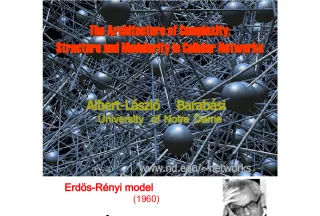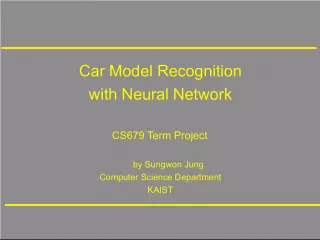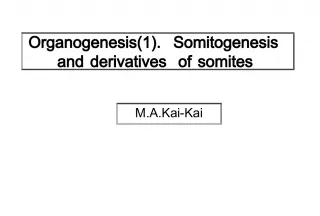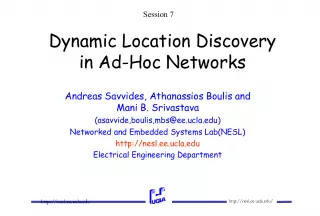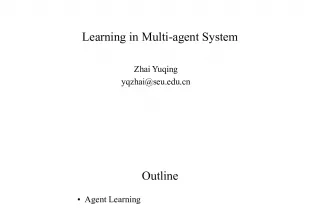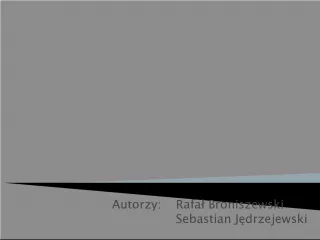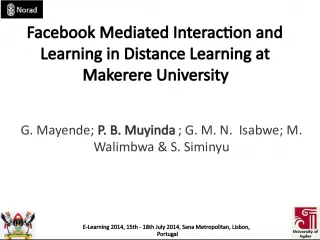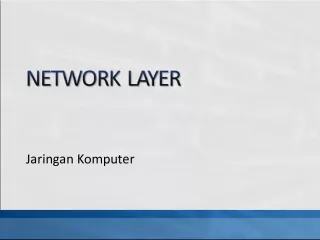Memristor in Learning Neural Networks


This presentation discusses how memristors, a type of electronic component, can be used in learning neural networks. Parts of the slides are taken from Elham Zamanidoost and Ligang
- Uploaded on | 2 Views
-
 kleydianne
kleydianne
About Memristor in Learning Neural Networks
PowerPoint presentation about 'Memristor in Learning Neural Networks'. This presentation describes the topic on This presentation discusses how memristors, a type of electronic component, can be used in learning neural networks. Parts of the slides are taken from Elham Zamanidoost and Ligang. The key topics included in this slideshow are . Download this presentation absolutely free.
Presentation Transcript
Slide1Memristor in Learning NeuralNetworks Shaodi Wang Puneet Gupta (puneet@ee.ucla.edu) 1 Parts of slides from Elham Zamanidoost and Ligang Gao
Slide2NanoCAD LabCharacteristics Shaodi Wang (shaodiwang@ucla.edu) 2
Slide3NanoCAD LabNeural Network Shaodi Wang (shaodiwang@ucla.edu) 3
Slide4NanoCAD LabLearning in Neural Network • Supervised Learning - Training set contains input and output *Feed-forward network *Recurrent network • Unsupervised Learning -Training set contains input only *self-organizing network Shaodi Wang (shaodiwang@ucla.edu) 4
Slide5NanoCAD LabMulti Layer Perceptron Shaodi Wang (shaodiwang@ucla.edu) 5 • Hidden layer(s) perform classification of features • Sigmoid activation function Back Propagation Learning: Apply gradient decent over the entire network As before, we have: For every output neuron: For every hidden neuron:
Slide6NanoCAD LabGradient Descent Shaodi Wang (shaodiwang@ucla.edu) 6 • Define cost function as sum of errors over entire training set, and errors as: • Now train the network in order to minimize the cost. This means that we need to minimize the error. Hence, we need a continuous activation function to calculate the derivative. • Sigmoid activation function: *Gradient Descent Learning where
Slide7NanoCAD LabRecurrent Network • Characteristics: - Nodes connect back to other nodes or themselves - Information flow is bidirectional • Fully recurrent network : there is a pair of directed connections between every pair of neurons in the network Shaodi Wang (shaodiwang@ucla.edu) 7
Slide8NanoCAD LabHopfield Network • Characteristics: - A RNN in which all connections are symmetric - Binary threshold activation function (CAM) - No unit has a connection with itself and W i,j =W j,i (symmetric) - symmetric weights guarantee that the energy function decreases monotonically - Hebbian learning: Increase weight between two nodes if both have same activity, otherwise decrease. - Synchronous training: the outputs for all the nodes are calculated before applied to the other nodes - Asynchronous training: randomly choose a node and calculate its output Shaodi Wang (shaodiwang@ucla.edu) 8
Slide9NanoCAD LabSelf Organized Map • The purpose of SOM is to map a multidimensional input space onto a topology preserving map of neurons – Preserve a topological so that neighboring neurons respond to « similar »input patterns – The topological structure is often a 2 or 3 dimensional space • Each neuron is assigned a weight vector with the same dimensionality of the input space • Input patterns are compared to each weight vector and the closest wins (Euclidean Distance) Shaodi Wang (shaodiwang@ucla.edu) 9
Slide10NanoCAD LabThanks Shaodi Wang (shaodiwang@ucla.edu) 10


